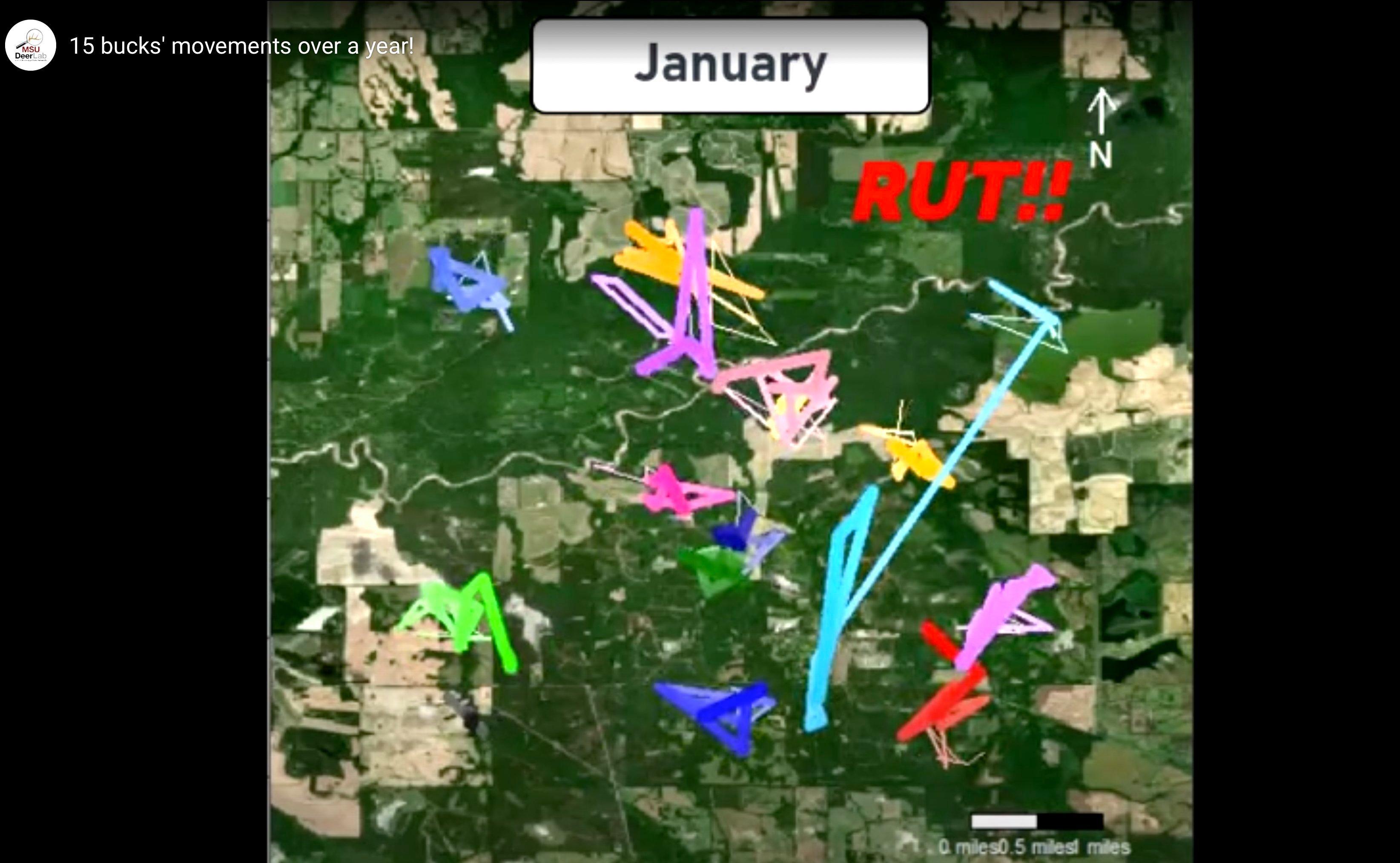A look at three unique whitetails paints important pictures about the amazing movement patterns of deer

As displayed in this screen shot of an MSU video, every buck is different. Image courtesy of MSU
Whitetails are their own beings. Each has unique behaviors and traits that differentiate it from other deer. That said, they still express common threads that hold true for most deer. Therefore, we can learn a lot about whitetails — specifically movement — from radio-collared deer.
The Mississippi State University Deer Lab is at the forefront of radio collar research. It has studied deer movements for years has made incredible discoveries. Consider the three bucks profiled here. Bucks 48, 140, 293 and others produced findings relevant for deer hunters.
Buck 48: The Sedentary Deer
Captured as a yearling (1-½-year-old) buck, No. 48 proved to be an interesting public-land deer. As coined by MSU, this deer had a sedentary personality, meaning it spent much time bedded or inactive. The lab’s discoveries revealed that 68% of bucks share that trait.
According to MSU, the deer had a 1,300-acre home range. As shown in the month-to-month and year-to-year timeline, this buck spent much of the year in specific areas of its home range. Sure, it took excursions at times, as all deer do. But it seemed to get what it needed at specific areas during specific times.
Further, during winter (specifically February and March), the buck embarked on large excursions. When deer hunters see new bucks that don’t stick around, that’s usually the answer.
Overall, the buck teaches us many lessons. Apparently, it was shot by a bowhunter in November 2021, but the hit wasn’t lethal. This didn’t limit the deer’s movement volume.
Another takeaway? The buck’s movements were quite unpredictable. It lived in homogenous big-timber country, where deer movements tend to be more sporadic. In contrast, ag country and food plot properties tend to produce more reliable deer movements. This indicates that the best thing a landowner can do is design a property layout to make deer movements more predictable.
Buck 293: The Mobile Buck
This was another interesting animal. MSU monitored Buck 293 for several years. The deer’s movements illustrated the consistency of whitetail movement patterns year to year at 5-½ and 6-½ years of age. The video shows the buck’s movements during the first week of December in back-to-back seasons. It even showcases where the buck was during daylight.
Overall, according to MSU, the buck also revealed valuable lessons. First, the deer moved more during morning than afternoon. That seems to be a trend, per the lab’s research. During daylight, bucks tend to move about 200 yards farther during a morning than in an afternoon.
Further, when comparing year-to-year data points, the buck was found in the same place at the same time. However, when comparing most matching days from each year, the buck was at different locations.
Third, the buck discovered specific areas on the property where it felt comfortable moving during daylight. Those places might seem arbitrary to hunters, but there’s something there. Hunters should find similar places on their properties.
Last, this deer is what MSU refers to as having a mobile personality. It was relatively loyal to its core areas. Still, the buck moved quite a bit. Further, there were 5 miles of separation between its spring/summer and fall/winter ranges.
Buck 140: The Traveling Whitetail
One of the most famous bucks followed by MSU, No. 140 is known for its great migrations. The deer was captured Dec. 20, 2020. At that time, it was 2-½ years old.
Like about one-third of adult whitetail bucks, the deer expressed a mobile personality, but on the extreme side of the spectrum. So much, in fact, that it spent time in Mississippi and Louisiana, traveling up to 18 miles and swimming the 1-mile-wide Mississippi River multiple times (at peak flood stage).
Interestingly, in 2021, the deer was very loyal to an area during summer. In fall and winter, it was much more sporadic. All said, it continued to spend spring and summer eating soybeans in Louisiana, and much of fall and winter running big timber in Mississippi. With each crossing, the deer crossed the river in roughly the same area.
Overall, the buck’s spring/summer and fall/winter ranges were 18 miles apart. America’s largest river and a state line separated the destinations.
15 Unique Bucks’ Movements
As expected, whitetail bucks are individuals, even in the same area. They live in different spots, express different tendencies, and have different habits. Nothing illustrates that better than MSU’s video showing the movements of 15 unique bucks.
Each deer is highlighted with identifying colors. In spring, summer and early fall, you can see how each buck was relatively loyal to its core area. When the rut kicked in, things changed in a big way. Some bucks continued to have small core areas, and some had much greater ones. But overall, movements increased, acreage coverage ramped up, and deer became more unpredictable.
So, if you hope to target a specific trophy buck, kill him before the rut. If you don’t have one picked out yet, hope that the rut to brings an unknown trophy to you.
Don’t Miss: HUNTER SHOOTS MONSTER BUCK AFTER HIS TRUCK BURNS DOWN










